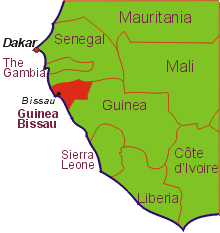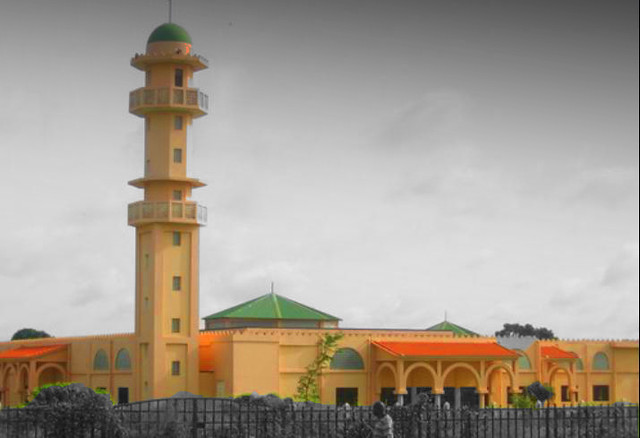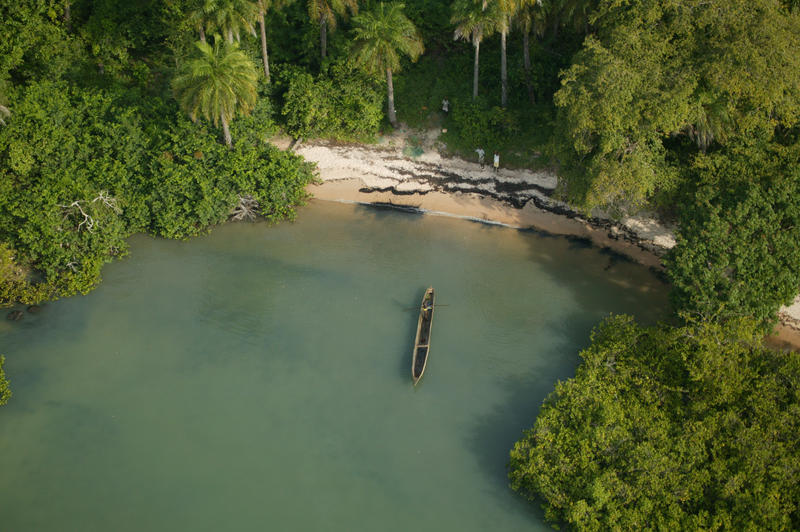So, now we move over to the
other Guinea that kept popping up when I was doing my research for the last blog
country I did: now we’re on Guinea-Bissau. This is another country that I had
very little pre-knowledge about. And because I had studied Portuguese and went
to Brazil, I thought I knew where most of the other Portuguese-speaking
countries were, but somehow this one escaped my list. It’s like the whole country was hiding in plain sight.
When it first gained its
independence, it quickly added the name of its capital to its name, officially
becoming Guinea-Bissau. This was
done in order to alleviate the confusion between this country and its neighbor,
Guinea.
Also in West Africa, this country
is surrounded by Senegal to the north, Guinea to the southeast, and the
Atlantic Ocean to the west.
Generally, the landscape lies low with swamps and plains, savannahs and
forested areas. The Bijagos
Archipeligo lies offshore: there are about 88 islands, but only 20 of them are
consistently inhabited. These islands are known for their flora and fauna,
namely its vast nature reserve, marine turtles, and hippopotamus population. The
country is warm all year round and has definite dry and rainy seasons.
Originally this area was
part of the Kaabu (or Gabu) Kingdom, which was part of the Mali Empire. Then the Portuguese arrived, and they
controlled it as their own; they renamed it Portuguese Guinea. It was also where many, many people
were exported as slaves, leading the way for its nickname, the Slave
Coast. In the beginning, the
Portuguese just stuck close to the shores where the ports were, where they
stayed for nearly 300 years. It wasn’t until the 1800s when they decided to
explore the interior of the country, but they were met with unwelcome arms. During
the mid-1950s, Amílcar Cabral led the African Party for the Independence of
Guinea and Cape Verde (say that three times fast) to convince Portuguese Guinea
to join in as well, but Cabral was killed in early 1973. Later that year the
colony of Portuguese Guinea officially broke away from Portugal and became the
independent country of Guinea-Bissau. (Guinea-Bissau and Cape Verde were
actually considered one country until 1980 when a coup broke them up.) Since then, Guinea-Bissau has had coup
after coup, revolution after revolution, and ousted presidents followed by
rigged elections. (Wait, I’ve heard this story before – it’s unfortunately the
same story found in many African countries.)
As I mentioned earlier, the
capital is the port city of Bissau. It is also the country’s largest city with
a population of around 400,000, roughly about the same as Minneapolis,
Minnesota. Other than being a large city, it would surprise the average tourist
that this is a national capital city. Much of the city is underdeveloped;
poverty and infrastructure problems tend to touch all aspects of life here. It
does have an airport, the mausoleum of Amílcar Cabral, an arts institution, a
stadium, and several local beaches.
Guinea-Bissau has one of the
lowest GDP per capitas in the world as well as one of the lowest Human
Development Indexes. Roughly 93% of its exports are in coconuts, Brazil nuts,
cashew nuts, ground nuts (peanuts), and fish/shrimp. Decades of political
turmoil and civil war has had its toll on the economy, from countries reluctant
to establish economic ties with Guinea-Bissau to the fact that it takes an
extremely long time to register a business (the average is about 233 days; in
contrast, it took me two days to register my business here in the US). The
country is also at risk of becoming a “narco-state,” since it’s now used as a
stop for cocaine runners between Latin America and Europe.
Starting in this century,
Islam began taking a larger hold of the population that was primarily
practicing the animism of their ancestors. Today, roughly half the population
professes to be Muslim, and about 10% follow Christianity. Like other West
African populations, many people follow either Islam or Christianity and still
practice animism at the same time.
Although the official
language of Guinea-Bissau is Portuguese, only a small portion (about 14% of the
population) actually speaks it. The vast majority of the people speak Kriol (or
Crioulo), a Portuguese-based creole. There are many people who still speak indigenous
languages as well. However, because of its location among several
French-speaking countries, many people here also study French as a foreign
language.
Unlike how I originally
thought, people from this country are NOT called Guinea-Bissauans, but rather
Bissau-Guineans. I suppose that makes sense in a way. When looking at the
credits for their national anthem called “Esta é a Nossa Pátria Bem Amada,” the
lyrics were by none other than Amílcar Cabral, but the music was by Xiao
He. This stuck out to me because I
was expecting either an African- or Portuguese-sounding name. (And actually,
Xiao He has the distinction of being the oldest living composer of a national
anthem: he was born in 1918.) Here’s where it gets interesting: a delegate of
Portuguese Guinea went to China and heard Xiao He’s music and fell in love with
it. This delegate approached the composer to ask him if he would write a piece
of music to serve as inspiration in the fight for independence. And He obliged.
As far as I can tell, although there is a small number of Chinese living in
Guinea-Bissau, Xiao He was never one of them. But it does add to the country’s
diversity. I’ve already found my recipes and made my playlist, and I’m really
excited for what’s to come.
Up next: art and literature








No comments:
Post a Comment